Landscaping is often added to a location to provide a more comfortable environment for users of outdoor spaces.
In a CFD simulation, the landscaping is modelled as a porous region. Special cells (regions) are placed into the model where the landscaping is meant to be which alter the behaviour of the simulation. For wind, this is done by adding resistance (or a pressure drop across the cells). For sun, this means adding shade. This pressure drop takes into account the type of the landscaping we have, for example, a palm tree will have a different pressure drop than a coniferous tree.
The provided geometry for this approach should be a rough representation of ONLY the leafy region because this is where the pressure drop will actually take place. Thus, when creating the geometry, it is recommended that some simplifications be made, for example, removing the trunks and only representing the canopy. Ideally, simple geometries should be used to represent those canopies, for example, cylinders or spheres.
Although porous landscaping is not supported in an AI simulation at this time, it can still be added as part of the surrounding building model. However, it is important to note that the landscaped features will be treated as a solid surfaces. If you’re wanting to see the true impacts of any landscape feature it is best to run a CFD simulation where porosity can be identified and simulated appropriately.
Note: Please identify the type of landscaping in both the scenario notes as well as the .STL file name (i.e. landscaping_deciduous). Please limit tree types to the four options shown below (coniferous, deciduous, palm, or winter tree)
Examples & Good Practices
Palm Trees
Palm trees are easy to identify, they are typically tall and their leaves are located at the top portion of the tree only.

Evergreen / Coniferous Trees
Evergreen / Coniferous trees are green all year long and their characteristics do not change from season to season.

Deciduous Trees
Deciduous trees change their characteristics from season to season. They contain leaves in summer/spring and lose them in autumn/winter. Note that at the moment, deciduous trees are treated with their full resistance all year long.
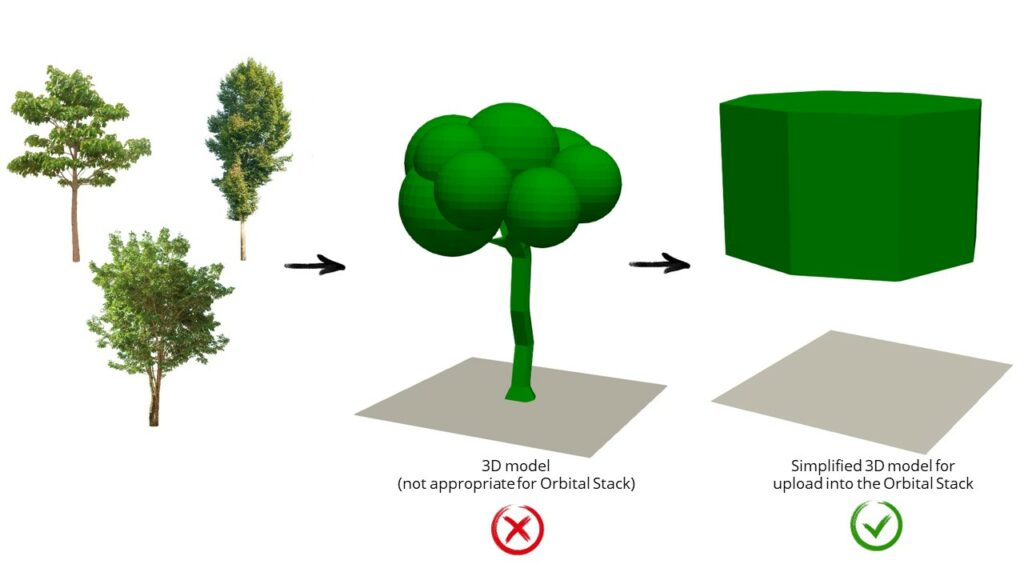
Winter Trees
Winter trees are trees without leaves. Since they don’t have leaves, they offer less resistance to the wind.

Groups of Trees
If your model has a lot of trees close to each other, like a forest, you can group all simplified geometries that represent the canopies in a single large volume.
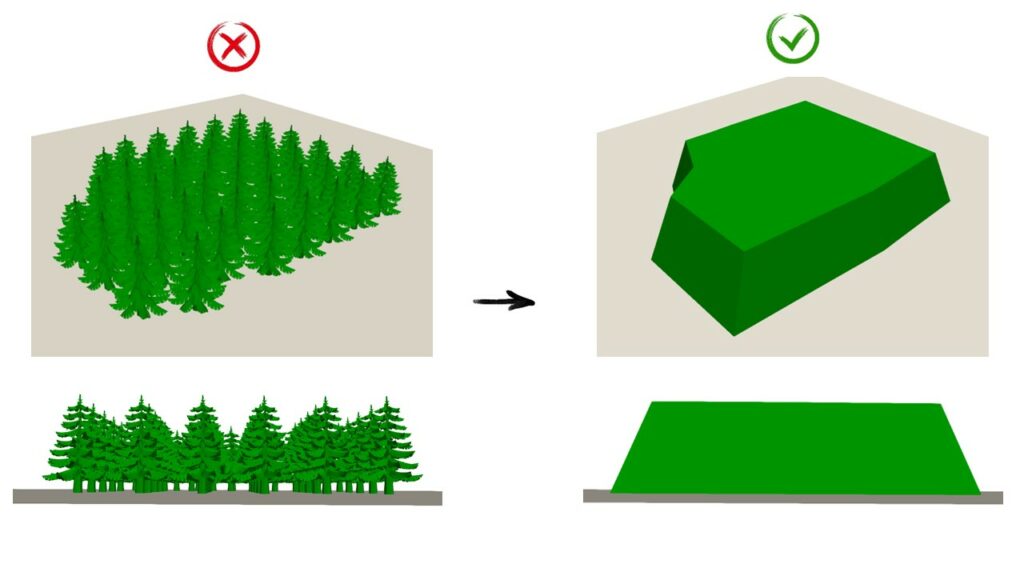
Important: In above case with evergreen trees grouped together, the volume must be modelled all the way to the ground surface.
Simplified Model
Below is an example of the cylinder used to represent a deciduous tree. Pay attention to the height of the cylinder, they should only represent the canopy, thus will be floating above the ground surface.
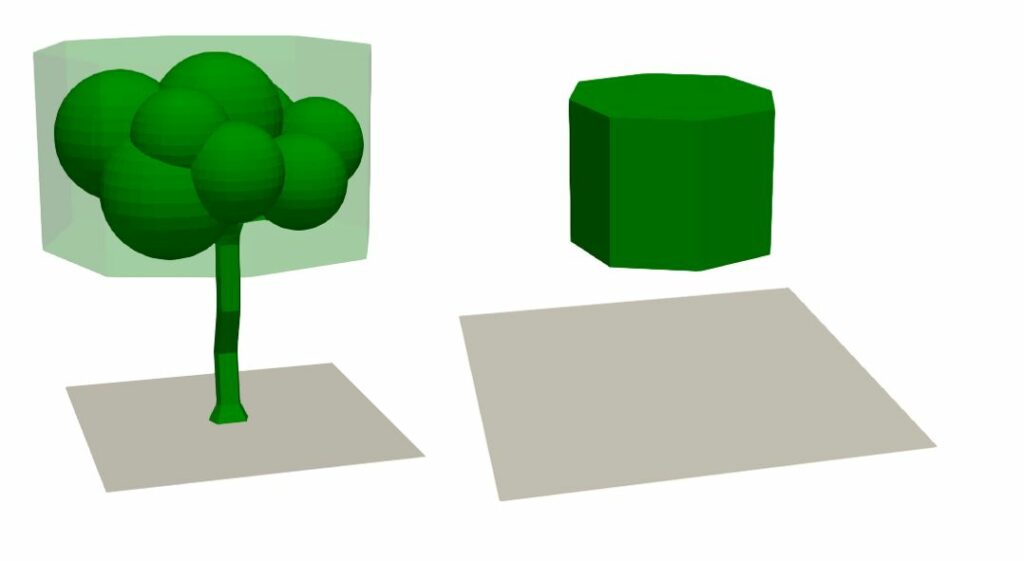
Dimensions

The main dimensions to verify while creating the simplified volume to your trees are:
- Canopy Width
- Canopy Thickness
- Height Above Grade
Use the dimensions that fit the entire crown portion inside the simplified volume. We only want to represent the region where the wind will experience some resistance.
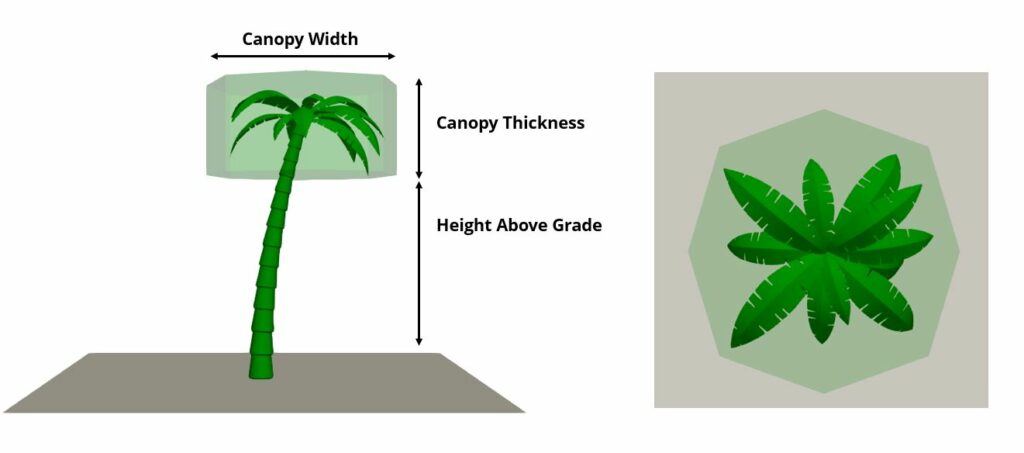
Low Resolution
When exporting your .stl be sure to keep the resolution of the simplified geometry as low as possible.
Don’t upload trees with high numbers of triangles (high resolution).
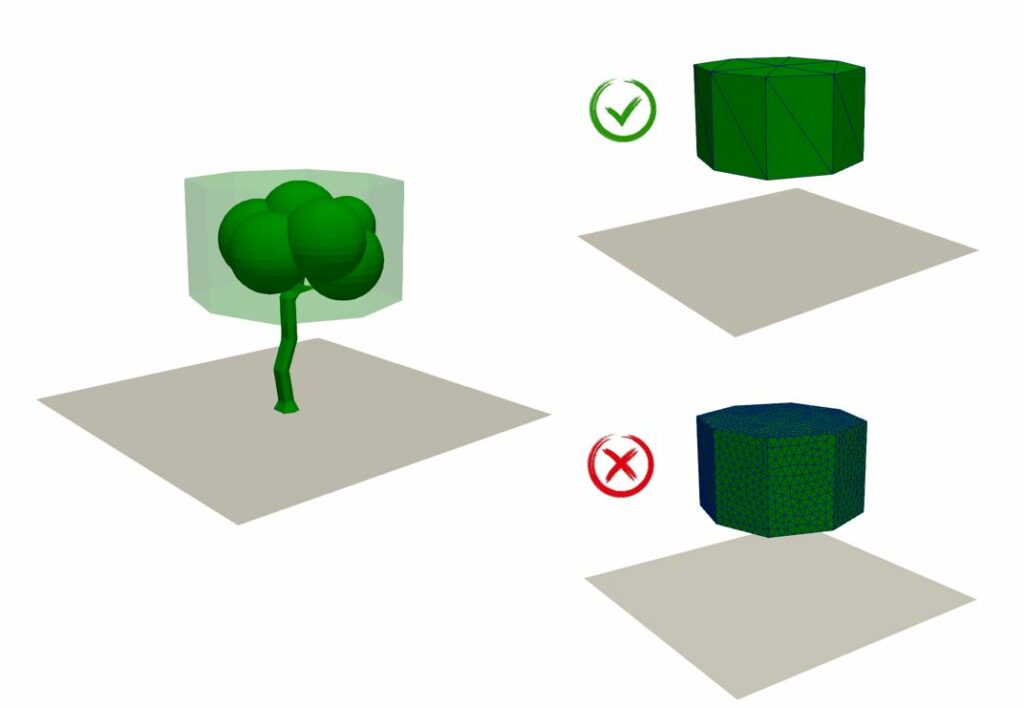
For additional information on preparing the rest of your geometry files, please check out our post Preparing Geometry post.